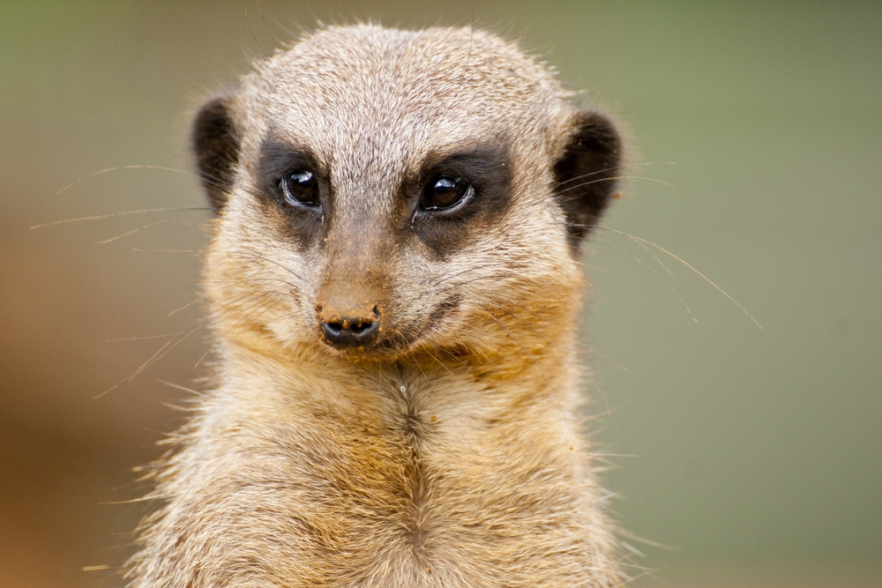
Taxonomy
Common dwarf mongoose
The family Herpestidae was first described by French biologist Charles Lucien Bonaparte in 1845.[23] In her 1973 book The Carnivores, mammalogist R. F. Ewer included all mongooses in the family Viverridae (the civets), though subsequent publications considered them a separate family.[24] In 1864, British zoologist John Edward Gray classified the herpestids into three subfamilies: Galiidinae, Herpestinae and Mungotinae.[25] This grouping was supported by British zoologist Reginald Innes Pocock in his 1919 publication, in which he referred to the family as “Mungotidae”.[26] However in the 2000s, genetic evidence from nuclear and mitochondrialanalyses argued against placing the galidiines in the mongoose family; these species have been found to be more closely related to other Madagascar carnivores, including the fossa and Malagasy civet.[27][28] Galiidinae is presently considered a subfamily of Eupleridae.[29]
Classification
- Family Herpestidae
- Subfamily Herpestinae
- Genus Atilax
- Marsh mongoose, Atilax paludinosus
- Genus Bdeogale
- Bushy-tailed mongoose, Bdeogale crassicauda
- Jackson’s mongoose, Bdeogale jacksoni
- Black-footed mongoose, Bdeogale nigripes
- Genus Galerella
- Angolan slender mongoose, Galerella flavescens
- Somali slender mongoose, Galerella ochracea
- Cape gray mongoose, Galerella pulverulenta
- Slender mongoose, Galerella sanguinea
- Black mongoose, Galerella nigrata (recently added)
- Genus Herpestes
- Short-tailed mongoose, Herpestes brachyurus
- Indian gray mongoose, Herpestes edwardsii
- Indian brown mongoose, Herpestes fuscus
- Egyptian mongoose, Herpestes ichneumon
- Small Asian mongoose, Herpestes javanicus
- Long-nosed mongoose, Herpestes naso
- Collared mongoose, Herpestes semitorquatus
- Ruddy mongoose, Herpestes smithii
- Crab-eating mongoose, Herpestes urva
- Stripe-necked mongoose, Herpestes vitticollis
- Genus Ichneumia
- White-tailed mongoose, Ichneumia albicauda
- Genus Rhynchogale
- Meller’s mongoose, Rhynchogale melleri
- Genus Atilax
- Subfamily Mungotinae
- Genus Crossarchus
- Alexander’s kusimanse, Crossarchus alexandri
- Angolan kusimanse, Crossarchus ansorgei
- Common kusimanse, Crossarchus obscurus
- Flat-headed kusimanse, Crossarchus platycephalus
- Genus Cynictis
- Yellow mongoose, Cynictis penicillata
- Genus Dologale
- Pousargues’s mongoose, Dologale dybowskii
- Genus Helogale
- Ethiopian dwarf mongoose, Helogale hirtula
- Common dwarf mongoose, Helogale parvula
- Genus Liberiictis
- Liberian mongoose, Liberiictis kuhni
- Genus Mungos
- Gambian mongoose, Mungos gambianus
- Banded mongoose, Mungos mungo
- Genus Paracynictis
- Selous’ mongoose, Paracynictis selousi
- Genus Suricata
- Meerkat, Suricata suricatta
- Genus Crossarchus
- Subfamily Herpestinae
Phylogenetic relationships
In 1989, zoologist W. Christopher Wozencraft noted that while the phylogenetic relationships in Mungotinae were obscure, studies in the latter par of 20th century supported two monophyletic clades in Herpestinae: one consisting of Atilax and Herpestes, and the other comprising Bdeogale, Ichneumia and Rhynchogale.[30] Like other feliformian carnivorans, mongooses descended from the viverravines, which were civet– or genet-like mammals.